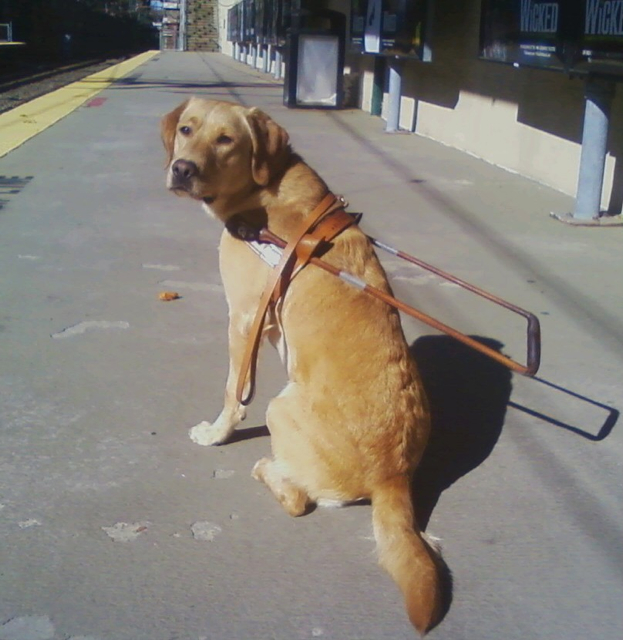A New York Times article called Why Do We Fear the Blind? quotes everyone from the 18th century French philosopher Denis Diderot to modern essayist Christopher Hitchens to try to explain why Blindness is the most feared and misunderstood of all disabilities. Well, from a journalistic point of view, I’d say the piece was too long, and I think the headline is not representative of the story. Because the story really describes why sighted people fear blindness — not people with blindness.
I mean, let’s be real. People are afraid of blindness because, well, being blind is scary. Maybe seeing someone like me, who is blind, serves as a reminder: this could happen to you, too.
Odds aren’t great, though. Only 1.3 million people in the United States are legally blind. That’s not many. We human beings tend to be fearful of things we don’t know, though, and with so few of us out here, your chances of getting to know a person who is blind is rare. The woman who wrote the New York Times article put on a blindfold to try to understand what it’s like to traverse city streets when you can’t see. I’m afraid all that does is make her readers more afraid. And grateful that they are not blind. But she can go away proud that she was sensitive enough to try walking around with a blindfold in an effort to simulate being blind.
People who are blind can’t take the blindfold off and then talk about how scary it is. We spend miserably difficult months with remarkably dedicated orientation and mobility trainers learning how to do simple things, like walk outside and mail a letter.
I started losing my eyesight in 1984, when I was 25 years old. Before then, I had a job advising college students who wanted to study overseas. The job entailed talking with students, checking out what programs might work for them, phoning different college departments or other universities to arrange for the transfer of college credits. I was sure I’d be able to perform these tasks without being able to see. My boss, however, was equally sure I could not. I tried proving her wrong. At first I didn’t use a white cane or a dog. I quit driving or riding my bike, but I could still see well enough to walk to work with a walking cane (Mike and I happened to have bought one as a souvenir during our honeymoon in Scotland months before, when I could still see perfectly well).
As my eyesight got worse, I started making mistakes in the office. One morning I spilled grounds all over the floor on my way to make the morning coffee. I sat inches away from my computer screen to see the words. I ran into tabletops. At one point my boss took me aside and told me I wouldn’t be going to the annual convention with my colleagues that year. “You’ll embarrass the office,” she said.
Those were scary times.
By the end of that year, I had lost my sight completely. The Americans with Disabilities Act had not been passed yet. My contract was terminated. My confidence was shattered. How could I have been so naive? Did I really think I was worth hiring? Why would anyone employ someone who couldn’t see?
I considered pursuing a Master’s degree in blind rehabilitation then, reasoning that if you work helping blind people, being blind would be an advantage, and I might get a job. After some soul-searching, though, I realized that with my personality I might be able to do more for the blind community by getting outside of it. I’m not shy, and demonstrating to people who might not come across a blind person in their daily lives that a person without sight can live a full, creative, and pleasurable life might show them that we’re nothing to be afraid of.
Which is not to condemn the writer of that New York Times article for trying. I just think, with this article, she failed.
00
 Last Friday Whitney and I took a train to Deerfield, a suburb of Chicago, to talk with second graders at Kipling Elementary School. It was “Disability Awareness Week” at Kipling, and the kids asked a lot of questions during the Q & A part of the presentation. Some examples:
Last Friday Whitney and I took a train to Deerfield, a suburb of Chicago, to talk with second graders at Kipling Elementary School. It was “Disability Awareness Week” at Kipling, and the kids asked a lot of questions during the Q & A part of the presentation. Some examples:

